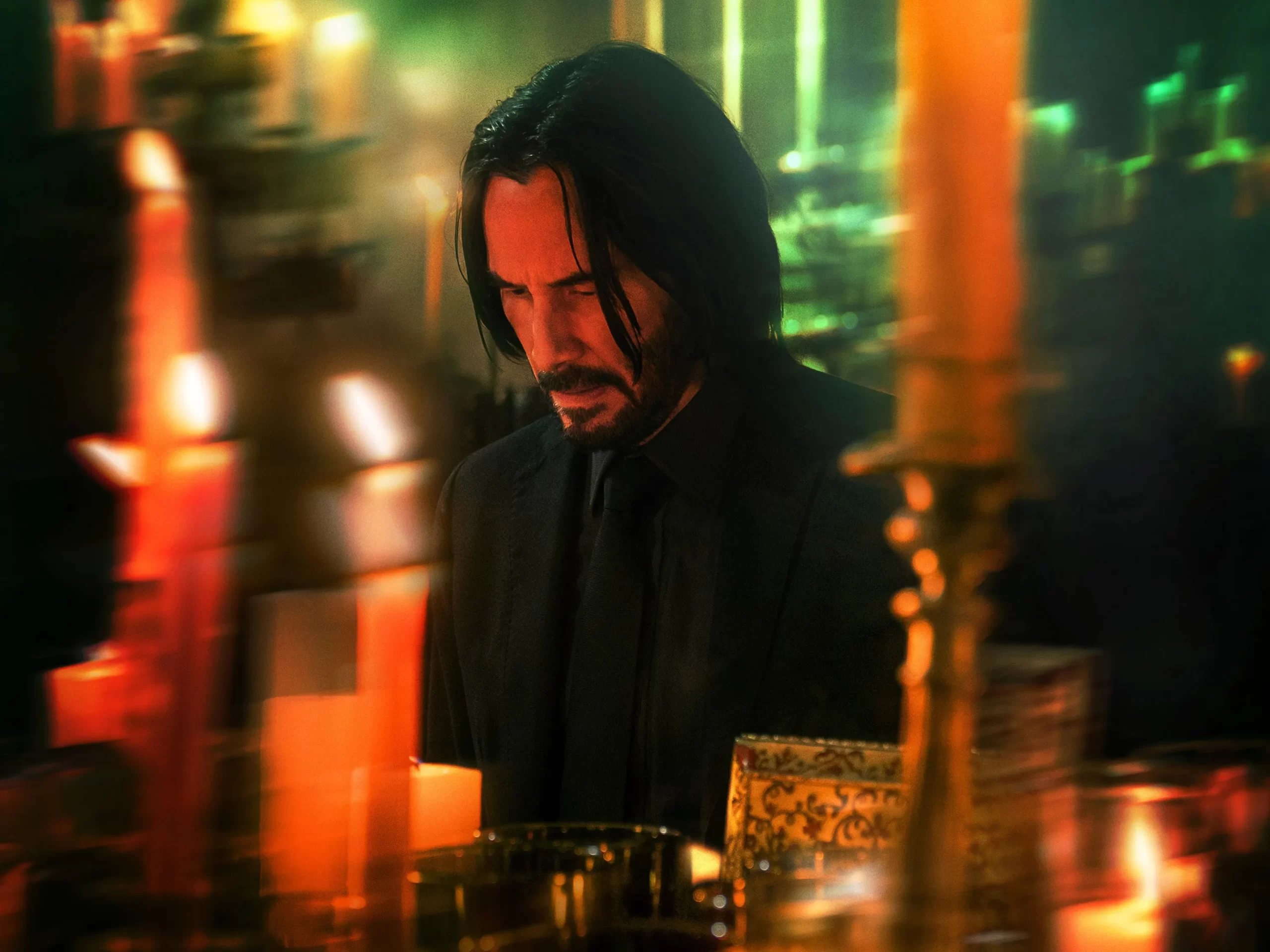
John Wick Chapter 4 review: Keanu Reeves kills and thrills in this grand action spectacle

Mid-way through the lengthy, at times draggy John Wick: Chapter 4, three assassins end up at a blackjack table in an underground German club, playing what seems like a fatal hand. They want to kill each other, but momentarily, buddy up to take down an unkind host — a gold-tooth-sporting mafia lord.
It’s a wicked, groovy sequence, where Wick pummels and gets pummelled to the beats of foot-tapping EDM. In its fourth instalment, the unlikely hit franchise ups the scale in terms of length, geography, calisthenics and bullet-immune silliness. The latest instalment, directed by Chad Stahelski, is broader in its horizon, meandering in its method, and almost overstays its moment but is bloody good entertainment still.
An elusive superhuman
Keanu Reeves reprises the role of John Wick, the stuttering, somewhat lonesome hitman who has drawn swords against the brutal, nihilistic world he has to an extent helped erect. The marquee villain of this particular film is Marquis (Bill Skarsgård), the new ‘Head of the Table’ who demands Wick’s head and as is customary of the franchise, puts out a speculative hit on him.
Also read: The Whale review: Brendan Fraser’s Oscar-winning role saves muddled tale of an obese man
This time, however, Wick must confront a former friend in the film’s breakout, and possibly scene-stealing act, Donnie Yen’s Caine. You can tell a franchise is bullish to the point of arrogance when it entrusts its villainy to a character who is blind but audaciously just adept at the shooting and the martial arts. Yen is thrillingly intense, menacing and comes close to overshadowing the candy-cushioning influence of Reeves’ charms.
Wick and Caine are set on a collision course, but the film is ambitious enough to attest a simple storyline with the burden of familiarity, friendship and guilt. There is collateral damage here, a common friend. For an action spectacle this grand and somewhat bloated, there, of course, have to be detours. Not all of them, however, feel earned. To earn his right to a duel against the Table head John must patch up with his family — an aspect of his character we have rarely contemplated or frankly, even cared for. It’s what comes with space, the compulsive need to facilitate just enough dynamism to forget the value of a cold, still moment.
Wick rarely pauses to consider why he kills with such inanimate abandon. Like the previous instalments, he refuses to open up, except when deciding the epitaph he would like on his grave. It’s one of the more puzzling, yet brave choices that the franchise has made: to never allow its magnetic lead to clutch at a language that, while it might give away his humanity, may also submit to his ordinariness. Wick, therefore, remains elusively superhuman because he rarely functions like one.
A man of finite taste and missions
The fourth film has a cascade of action pieces, some extraordinary, some embellishments of the budgetary muscle that a strong franchise can pull. The film travels to Asia, Germany and finally France, where it explodes, gradually into a marathon of bodies and blows. A sequence that follows Wick’s rampage with a flame-throwing gun, from above, mimics the play of a video game, switching between dizzying creativity and bullet-unloading inanity.
Wick is shot, kicked, creamed and crushed and yet he continues to murder without poignancy. There must be an intellectual purgatory, where men in bulletproof suits, empty the sum total of a world war’s cartridges and yet continue to somehow both miss and hit their targets. It’s bafflingly stupid, and yet you cannot look away.
We’ve seen trigger-happy heroes with imperious CVs before but Wick has, by some margin, caught the imagination of the world. Part of it probably has to do with the actor’s lumbering self, devoid of modern appendages like abs and inhuman strength. Wick is a minimalist, a man of finite taste and missions, a suave and graceful John McClane if you like.
Grisly violence has the subtext of emotion
Part of the franchise’s popularity, however, has to do with its aesthetic commitment to grandeur. An experiential form of art and history has helped build this world of tables, mercenary organisations and a global network of assassins that seem to never ever encounter modern law-enforcement, visa applications or a rudimentary social critique of their business.
Also read: All Quiet on the Western Front review: A meditation on meaninglessness of war
Churches, renaissance art and bourgeois methods elevate this story to an atmospheric layer from where the earth and its mundanities seem reserved only for the cynics. John Wick, quite literally, embodies cinema’s impudence, its ability to reel you in and force you to consider the inconceivable, if not believe.
Not everything fits in this film. At nearly three hours, action sequences, their sheer frequency begin to weigh down you with their rehearsed, unabashed cockiness. You’ll be gobsmacked to count the number of times Wick is sideswiped by a speeding vehicle, and is somehow still able to limp back to life. The grisly violence, however, is also supported by the subtext of emotion that has hung over this franchise from the second film onwards.
The loudest cheer, for example, is drawn by a canine’s act of churlish revenge. It confirms the franchise’s quality to evoke, besides the glee of watching Reeves barrel through the best part of humanity with as little as a smirk or a sigh, a common sense of exhilaration. “Those who cling to death, live”, Wick says at one point, echoing perhaps the spiritual abandon cinema has been created for. It’s what good films do — make us collectively whole, at least for that one screeching moment of theatre-splitting clarity.

